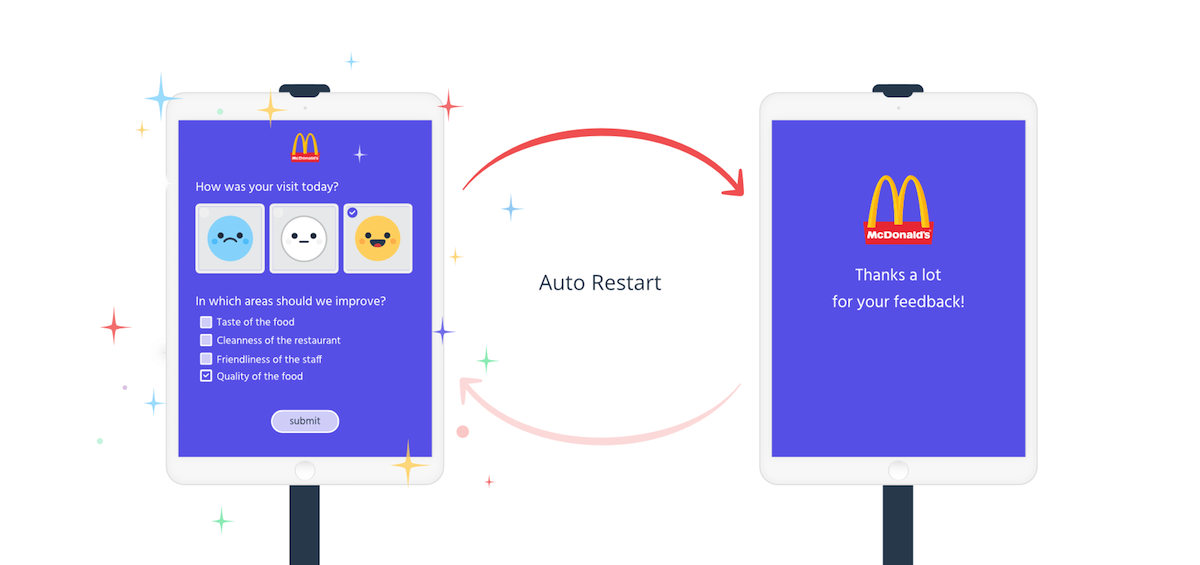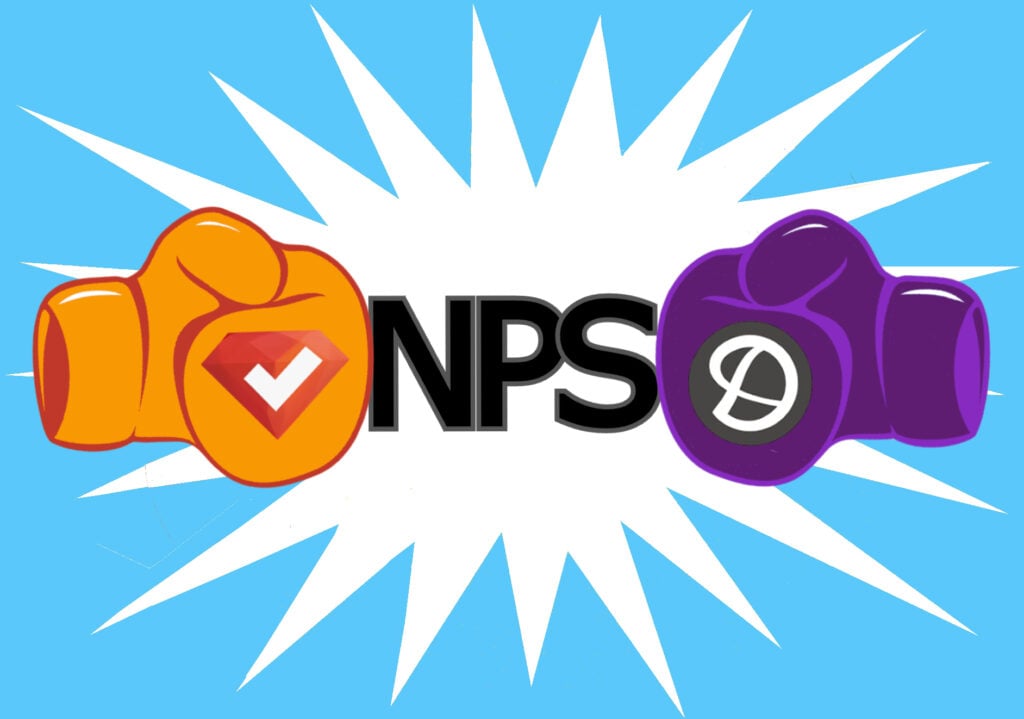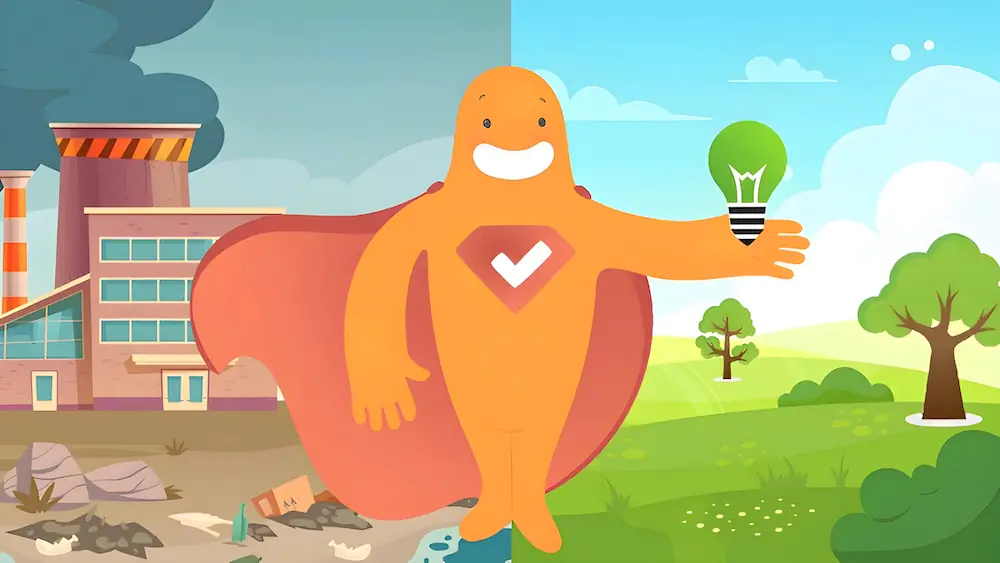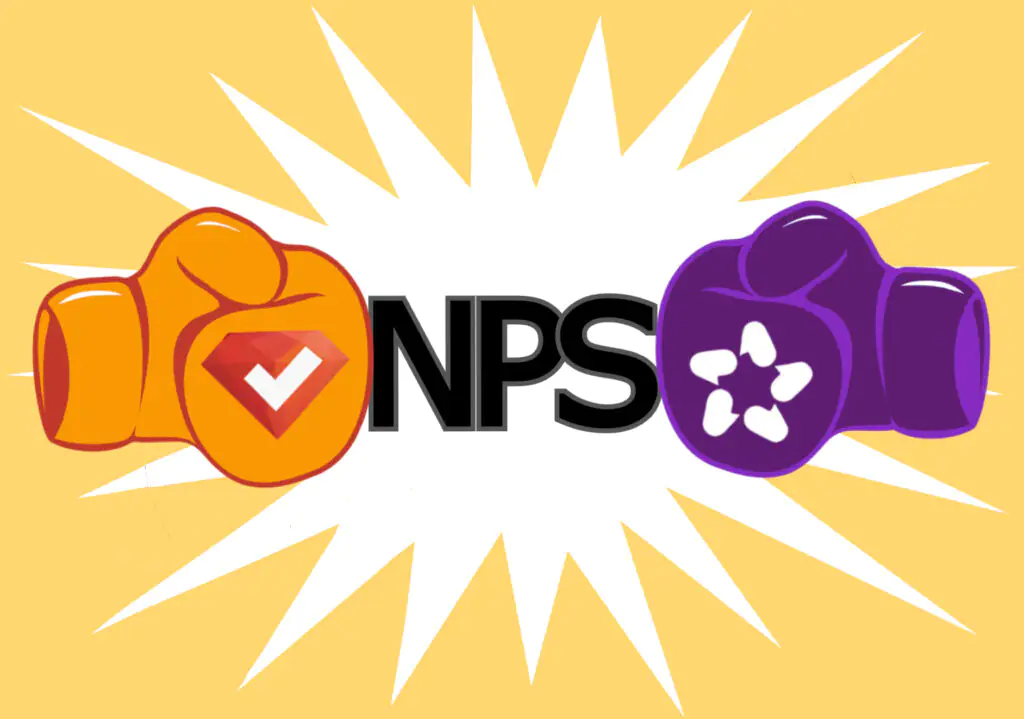Marketers, retailers, and researchers are always looking to collect feedback from customers. They want to know if the service was good, what could be improved upon, and overall satisfaction levels. But, sometimes consumers can get “survey fatigue” if their email inbox is constantly bombarded with survey requests or if they get too many phone calls asking for feedback. So, another way to capture feedback is through kiosk surveys.
Create your first kiosk survey, form, or poll now!
What is a Kiosk Survey?
A kiosk survey is a touchscreen display device placed in various outlets that ask for feedback, often at the point of purchase. You can find them on tables in restaurants, at the exits of retail stores, and so on. The displays are programmed with a questionnaire that collects feedback and then automatically resets for the next person once the survey has been successfully submitted.
For example, let’s say you place a kiosk survey in your bakery. Your customer notices it on their way out and the screen reads that customers can be entered for a chance to win a gift card just for completing a quick survey. Always a fan of incentives, the customer takes a few minutes to complete the questionnaire. Often, to keep it simple, questions are based on a rating scale. So on a scale of 1-5, it may ask questions like:
- How was your overall experience today?
- Did you receive fast and friendly service?
- How was the quality of your food or beverage?
- Would you recommend our bakery to a friend?
- How likely would you be to come back again?
The customer completes these quick questions, hits submit, and then the kiosk resets for the next person. In very little time, you’ll have built up quite a database of information!
Six Benefits of Using Kiosk Surveys
Yes, customers may be in a hurry and not complete a kiosk survey. And occasionally, the touchscreen could freeze up. But overall, the advantages of kiosk surveys far outweigh these negatives. Here’s a quick look at the pros of using a survey kiosk for your business.
1. No Pressure to Respondents
People typically don’t like to be pressured into taking a survey, so an in-person intercept interview may turn them off. However, a standalone kiosk survey is a passive experience; they can choose to complete a survey or walk away.
2. Cost-Effective
Hiring an interviewer to collect responses in-store through an intercept interview can get expensive if you intend to conduct surveys frequently. A kiosk may have an initial small investment, but in time it will have paid for itself through feedback collection.
3. More Accurate Feedback
If you wait to collect feedback through an email or phone survey, there’s a good chance the person won’t have a great recollection of their experience. So, you may not get the most accurate answers. Using a kiosk survey, you collect feedback while the experience is still fresh in consumers’ minds.
4. High Volume of Responses
It’s easy to delete an email or hang up after a customer service call without taking the survey. Survey kiosks tend to get a better response because people can take the survey while they’re waiting for their order, waiting for a friend to arrive, and so on.
5. Easy Implementation
Kiosks are easy to set up and require little maintenance. Internet access is no longer an issue as most businesses now have reliable Wi-Fi. Without the need to hardwire equipment, today’s kiosks are cloud-based making them easy to implement.
6. Unique Data Collection
Last but not least, if you have multiple locations, you can collect data for each location and then compare while some locations get high marks and others do not. The ability to set benchmarks for locations then becomes very easy.
Tips for Kiosk Survey Questions
When you’re ready to create your kiosk survey questions, there are a few good habits to keep in mind.
Keep It Short
People become disengaged when surveys go on and on or seem to ask repetitive questions. So, keep your survey as short as possible (especially if it’s a standup kiosk). We recommend keeping surveys to about five questions so that they shouldn’t take more than a minute or two to complete.
Keep It Simple
Asking people to type out answers will result in some dropping out. So, as mentioned, use a rating scale or yes/no questions. You might want to include an open-ended question for “additional comments” if participants are so inclined.
Include Survey Pictures
Pictures can really improve the look of your surveys and reduce language barriers. Depending on the type of business, a survey kiosk with pictures is a great choice. You might also consider a kiosk survey with emojis, once again making it easy for participants to understand and complete.
Place Kiosk Surveys at “Bottlenecks”
To collect the most feedback, place kiosk surveys in places where people tend to get help up, such as doorways, registers, and the like. This will also help them get noticed (some signage doesn’t hurt, either)!
Kiosk Survey Examples
Below is an example of a survey with pictures created using SurveyLegend. A rating scale also makes it simple for respondents to complete.
Here’s another kiosk survey example for a medical facility. This survey with emojis also includes a large photo.
Lastly, this next example is for a restaurant. It uses star ratings which were popularized for restaurants due to Zagat.
Conclusion
Kiosk surveys are a great way to collect customer feedback in real-time, providing on-the-spot thoughts from respondents while the experience is still fresh in their minds. If you’re considering one of these displays for your business, you can’t go wrong with SurveyLegend. Our surveys with pictures render beautifully on any device, and they’re easy to create. Get started today or learn more about our kiosk surveys.
Have you considered a survey kiosk for your business? How much more feedback do you think you could get? Let us know your thoughts in the comments!
Create your first kiosk survey, form, or poll now!
Frequently Asked Questions (FAQs)
Kiosk surveys can usually be found at businesses that value customer feedback. These touchscreen kiosks can usually be found at the point of sale or exit.
The ability to get customer feedback during or immediately following their experience is the biggest benefit. The experience is still fresh in their mind and their feedback is likely to be more accurate.
The only drawback is the potential for technical difficulties, but these can usually be resolved easily.








